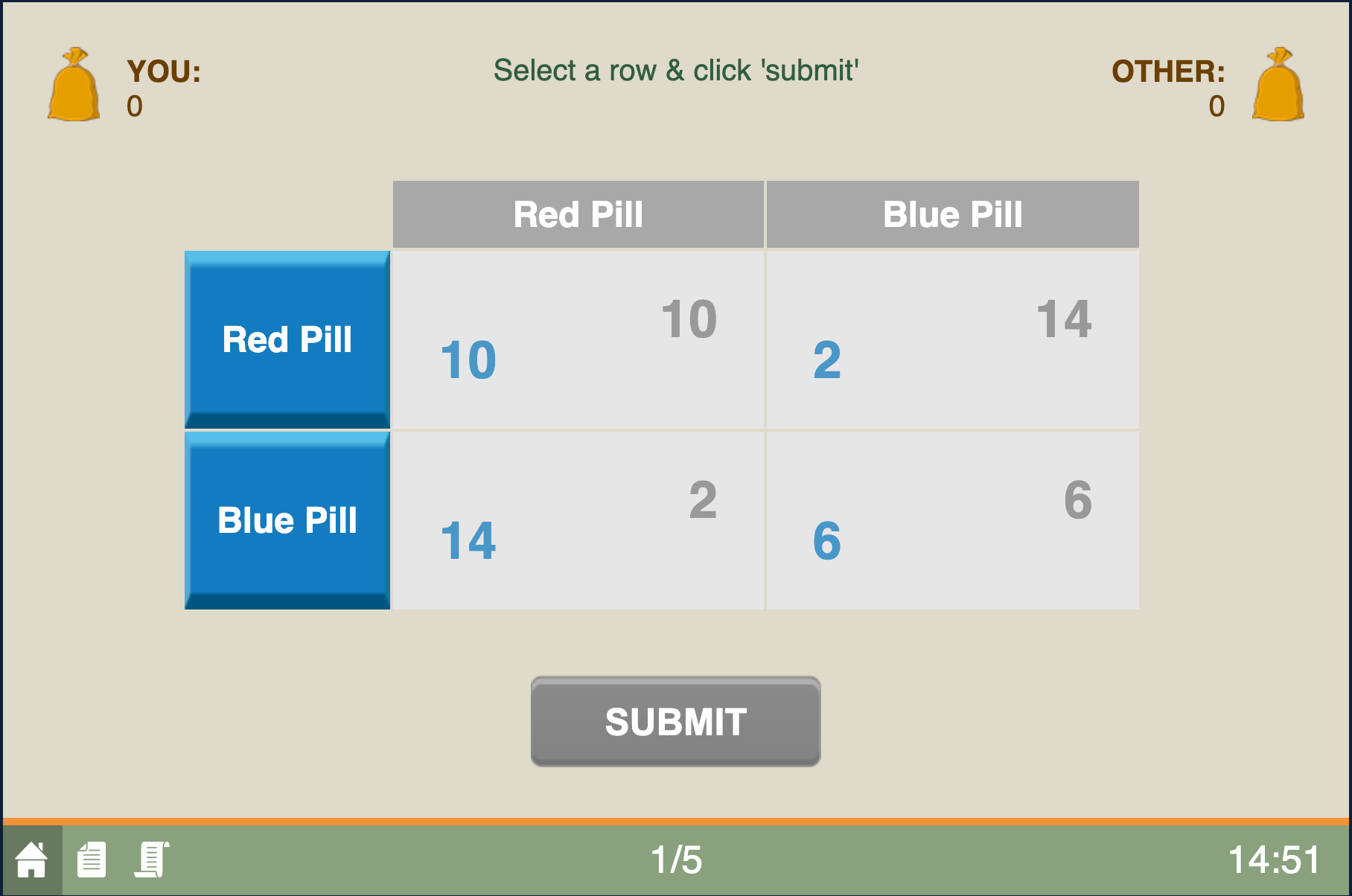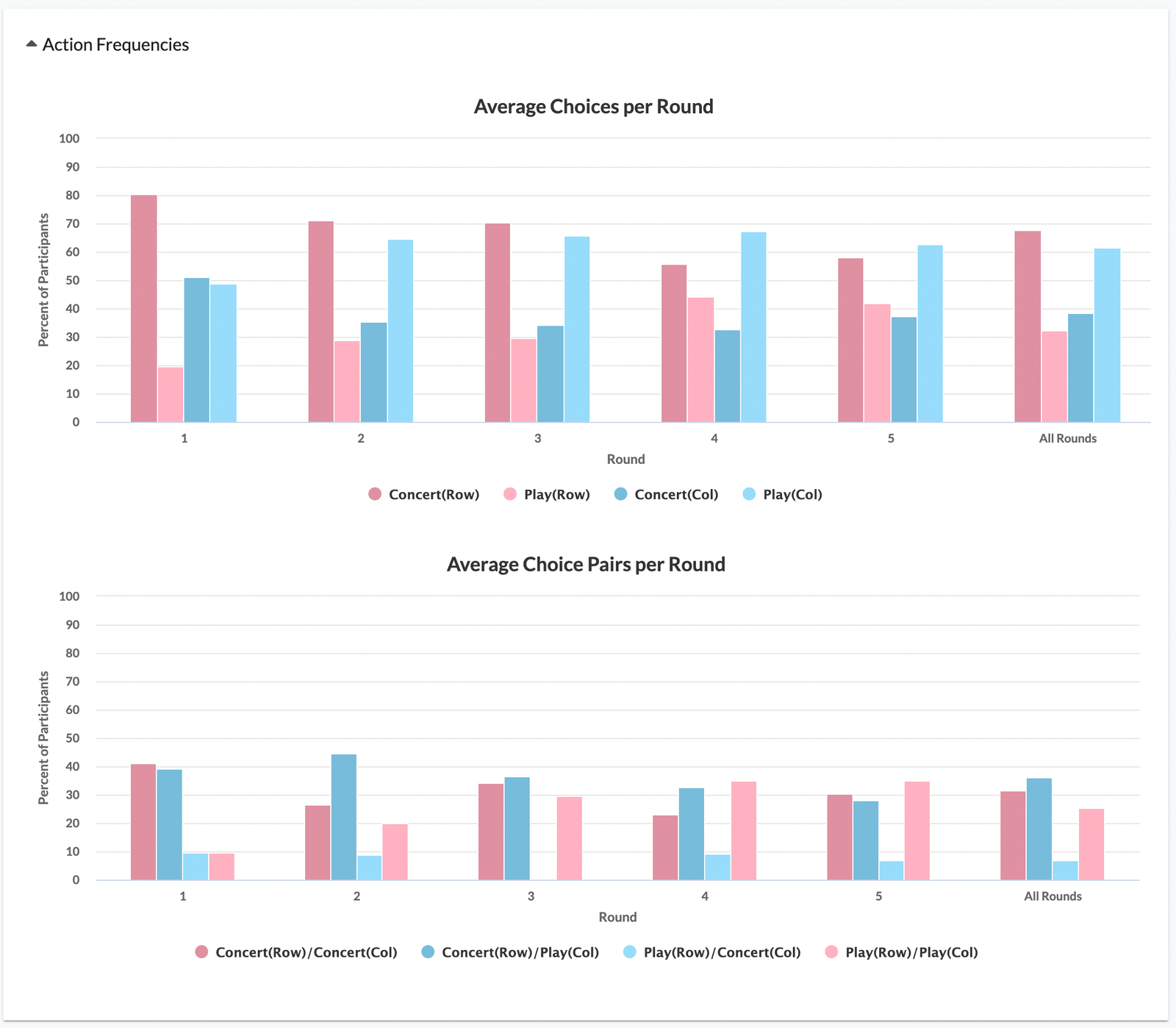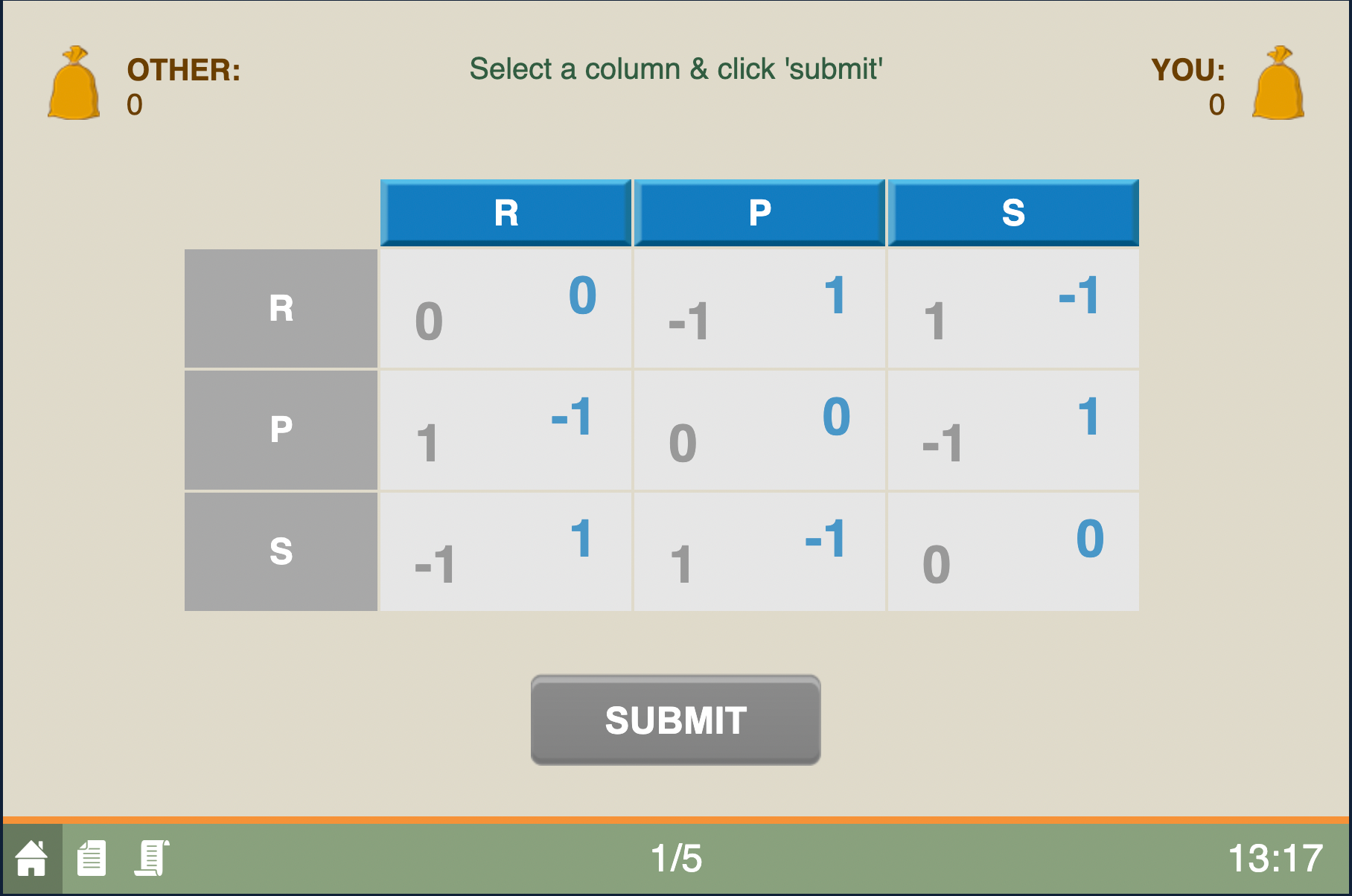Although it would certainly be good fun to discuss the Sci-Fi classic with your students, we have something even better in mind: Matrix games. This classic way of depicting the decision space in strategic interactions is part of every basic textbook from introduction to economics to more advanced game theory textbooks. Of course, most instructors are familiar with our Prisoner’s Dilemma, but MobLab has created several pre-built payoff matrix economics games that we want to highlight to you.

Standard Matrix: Inside the Matrix
Bach or Stravinsky
This game was introduced in 1957 by R. Duncan Luce and Howard Raiffa and is known as Battle of the Sexes or Bach or Stravinsky (BoS).

BoS Matrix
In this game two matched students have to decide whether they want to attend a Concert or a Play. They both have their individual slight preference, which are opposite, but prefer in all cases to attend the events together. In contrast to the Prisoner’s Dilemma, a game with one unique Nash equilibrium, Bach or Stravinsky is a first expansion to a matrix game with two Nash equilibria in pure strategies and one Nash equilibrium in mixed strategies. Consequently, it provides a scenario to discuss mixed strategy equilibria and coordination mechanism to avoid the 0,0 payoff. Certainly your students will be able to relate to the idea that not communicating with your friends, partner, etc. can lead to very bad experiences.
Debriefing the Game

Sample Results BoS
Once your students have tested their social coordination ability, you can immediately pull up their results to show them how well they did. In the sample results above, the top graph displays the Percent of Participants that choose a given action per Round given their role (row/column). The test of whether students really coordinated with each other is in the second half of the graph. Here we would expect to observe that the total percentage of Concert/Concert and Play/Play increases across rounds. In our sample data, we observe that the total percentage increases although substantial incoordination in round 5 is still present (~30% Concert/Play).
Matching Pennies
Moving away from Nash equilibrium in pure strategies, the matching pennies game first provides a first game with no pure strategy and one mixed strategy Nash equilibrium.

Interface Matching Pennies
In this game students cannot coordinate with each other and will quickly have to learn that the only way to obtain a non-negative payoff is by randomizing 50-50 between the actions H and T. This kind of thinking can be difficult for students to grasp, which is why this very simple symmetric payoff matrix is a good learning tool to understand the concept of randomization in choices.
Debriefing the Game

Matching Pennies Results
Given that the theoretical prediction of this game is simple, you should expect your students to converge towards choosing each action about 50% of the time and the pairs to occur about 25% of the time. There might be significant round to round variability depending on class size and level of experience.
Rock, Paper, Scissors
Moving from our example of a game with only a mixed strategy equilibrium with two decisions, we turn to Rock, Paper, Scissors, which provides a game with three options in the decisions space and one mixed strategy Nash equilibrium. Having played this during their childhood, students might recall their own strategies and test them against rigorous strategic analysis.

Rock, Paper, Scissors Interface
Debriefing the Game

Rock, Paper, Scissors Results
As with all of our economics games, MobLab provides you immediately with the visualized results of your session through your instructor console. In this game, we would expect that average choices and the average choice pairs would tend towards the Nash equilibrium in mixed strategies (1/3 for choices and 1/9 for choice pairs) over time. Students might stick to their heuristic strategies at the beginning (always play rock, etc.), but with time, the payoffs guide them towards the outcome predicted by theory. MobLab provides a great way of showing students that while our intuition provides us good guidance in some situations, they can refine how to strategize through further understanding.
Are you ready to find the answers to your question concerning MobLab’s matrix games? To learn more, get in touch with our team. We’re happy to help. Click here to schedule a one-on-one demo meeting.

Standard Matrix: Inside the Matrix
This game was introduced in 1957 by R. Duncan Luce and Howard Raiffa and is known as Battle of the Sexes or Bach or Stravinsky (BoS).

BoS Matrix
Debriefing the Game

Sample Results BoS
Matching Pennies
Moving away from Nash equilibrium in pure strategies, the matching pennies game first provides a first game with no pure strategy and one mixed strategy Nash equilibrium.

Interface Matching Pennies
Debriefing the Game

Matching Pennies Results
Rock, Paper, Scissors
Moving from our example of a game with only a mixed strategy equilibrium with two decisions, we turn to Rock, Paper, Scissors, which provides a game with three options in the decisions space and one mixed strategy Nash equilibrium. Having played this during their childhood, students might recall their own strategies and test them against rigorous strategic analysis.

Rock, Paper, Scissors Interface

Rock, Paper, Scissors Results
Are you ready to find the answers to your question concerning MobLab’s matrix games? To learn more, get in touch with our team. We’re happy to help. Click here to schedule a one-on-one demo meeting.

